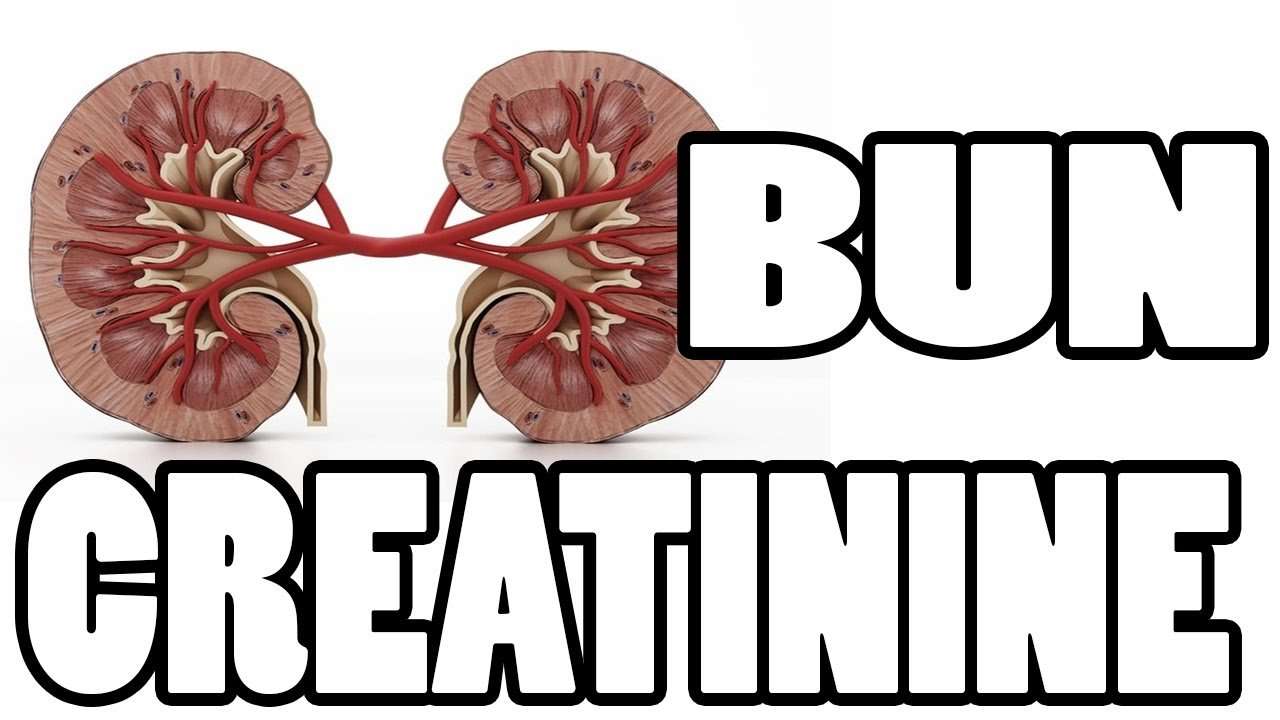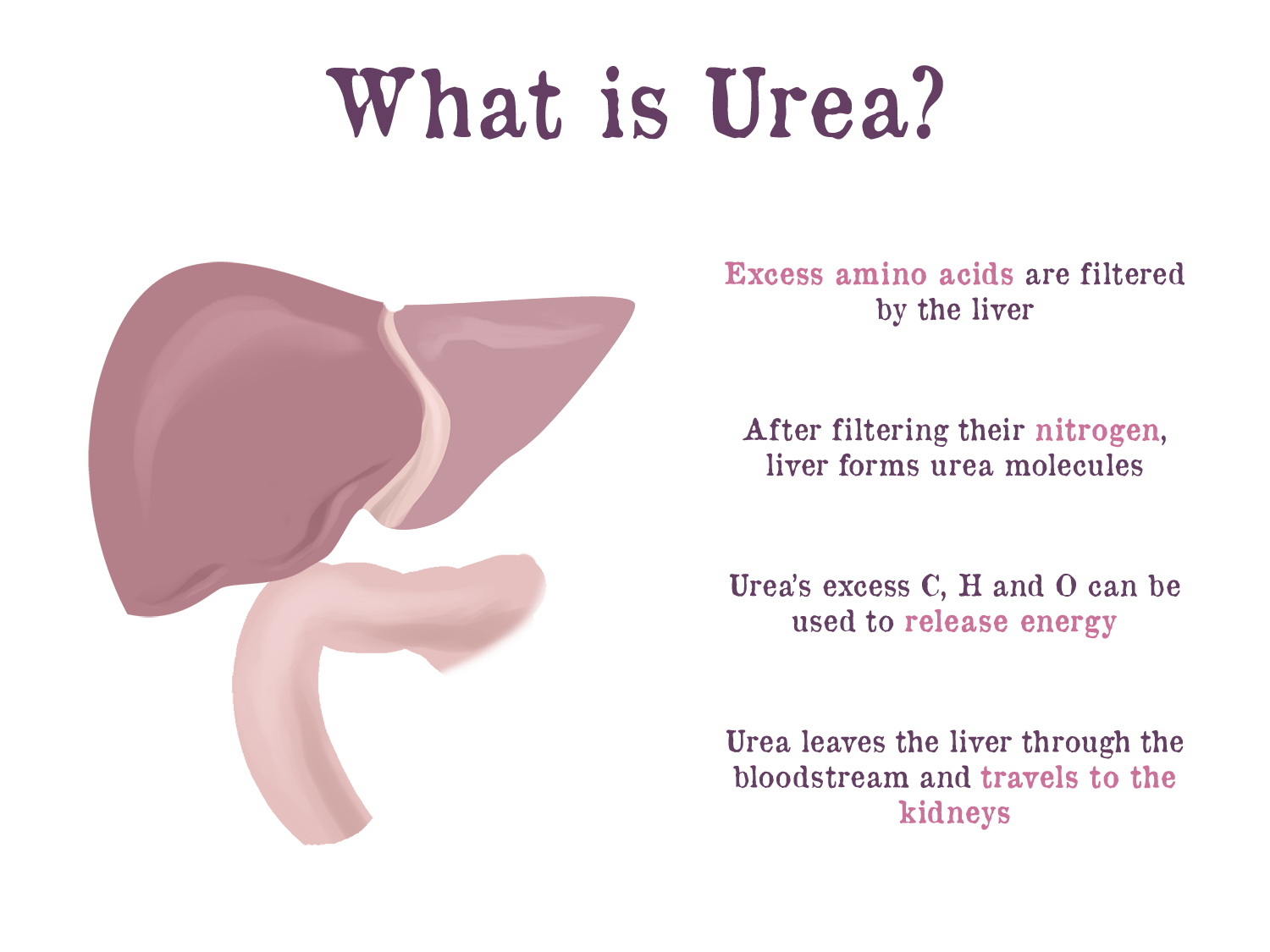How To Get Tested
Testing for blood urea nitrogen is normally prescribed by a doctor, and the test is performed using a sample of blood that is drawn from a vein in your arm. The blood draw normally takes place in a medical setting like a doctors office or laboratory.
While BUN can be tested alone, in most cases it is part of a panel of tests that includes multiple measurements from the same blood sample. For example, BUN is a standard component of the basic metabolic panel and comprehensive metabolic panel.
The Stages Of Chronic Kidney Disease
Your GFR number tells you how much kidney function you have, as kidney disease gets worse, the GFR number goes down. “Normal” GFR is approximately 100 but you will often see it reported as > 90 or > 60 . Dosage of drugs that are excreted primarily via urine may need to be modified based on either GFR or creatinine clearance.
A GFR number of 60 or higher is still considered to be within the normal range. A GFR number under 60 can mean you may have kidney disease. A GFR number of 15 or less may mean kidney failure.
| GFR % of Chronic Kidney Disease Function |
|---|
| Stage |
| 75 |
Further Resources
- What is the Risk of Developing Kidney Failure in Your Lifetime – Study reveals how likely middle aged adults are to develop kidney failure during their lifetime – American Society of Nephrology
- Increased Lifespan of Transplanted Kidney’s – An international study lead by kidney specialist Maarten Naesens of KU Leuven shows that the progress of the lifespan of a transplanted kidney is stagnating – Ku Leuven
- Home Urinalysis Test Strip Color Chart and Explanations – Example color chart to compare home urine test strip colors in comparison to a urinalysis color chart of what each ideal test result color should read – Disabled World
Understanding Your Lab Values
People who develop chronic kidney disease may have some or all of the following tests and measurements. If you have kidney disease ask your doctor which tests you will have and how often they will be done. Speak to your doctor about your results. If your numbers are not in the normal range, ask how to improve them.
Serum Creatinine: Creatinine is a waste product in your blood that comes from muscle activity. It is normally removed from your blood by your kidneys, but when kidney function slows down, the creatinine level rises. Your doctor should use the results of your serum creatinine test to calculate your GFR.
Glomerular Filtration Rate : Your GFR tells how much kidney function you have. It may be estimated from your blood level of creatinine. If your GFR falls below 30 you will need to see a kidney disease specialist . A GFR below 15 indicates that you need to start a treatment for kidney failure. Your kidney disease specialist will speak to you about treatments for kidney failure, such as dialysis or kidney transplant.
Blood Urea Nitrogen : Urea nitrogen is a normal waste product in your blood that comes from the breakdown of protein from the foods you eat and from your body metabolism. It is normally removed from your blood by your kidneys, but when kidney function slows down, the BUN level rises. BUN can also rise if you eat more protein, and it can fall if you eat less protein.
Save this content:
Don’t Miss: Is Celery Good For The Kidneys
What Is A Bun Test
A BUN, or blood urea nitrogen test, can provide important information about your kidney function. The main job of your kidneys is to remove waste and extra fluid from your body. If you have kidney disease, this waste material can build up in your blood and may lead to serious health problems, including high blood pressure, anemia, and heart disease.
The test measures the amount of urea nitrogen in your blood. Urea nitrogen is one of the waste products removed from your blood by your kidneys. Higher than normal BUN levels may be a sign that your kidneys aren’t working efficiently.
People with early kidney disease may not have any symptoms. A BUN test can help uncover kidney problems at an early stage when treatment can be more effective.
Other names for a BUN test: Urea nitrogen test, serum BUN
What Are The Normal Range For Kidney Function

Understanding Kidney Function Numbers and What They Mean 1 Symptoms You Could Experience with Elevated Creatinine and Urea Levels. 2 More on Your Kidney Function Numbers. The normal range for kidney function numbers is between 80 3 Before Testing. Before performing any kidney function labs, your doctor should take
Read Also: What Tea Is Good For Kidney Function
Clinical And Biochemical Assessments
Blood samples were obtained from each patient in the early morning after an overnight fast. Daily proteinuria was also measured. The eGFR was calculated using the following new equation for Japanese patients: 194×serum creatinine1.094×age0.287×0.739 . The cSosm was calculated using the following formula: ++ .
Clinical assessments at admission and the definitions of hypertension, diabetes mellitus, smoking, and dyslipidemia are described in our previous report . An echocardiogram was performed to assess left atrial diameter and left ventricular ejection fraction.
What Happens During The Creatinine Clearance Test
You will do the creatinine clearance test over 24 hours. During this time, you will collect your urine each time you urinate. This will give your healthcare provider a good idea of your creatinine levels throughout the entire day.
Make sure to follow the directions from your healthcare provider closely. These instructions will include details about how to store your urine sample and where you will take it when the test is over.
After 24 hours of collecting your urine, you will need to have your blood drawn. This second part of the test looks at the amount of creatinine in your bloodstream. This is called serum creatinine. Your results from both of these tests will be plugged into a mathematic formula that determines your creatinine clearance. This rate tells your provider just how well your kidneys are filtering waste products out of your bloodstream.
You May Like: Is Almond Milk Good For Kidneys
What Is The Prognosis For High And Low Creatinine Levels
The prognosis for high creatinine levels depends on the underlying cause.
If high creatinine levels are due to kidney disease, it depends on the stage of the illness. Kidney disease often progresses slowly, and early stages may often be managed with a healthy diet, exercise, and proper medications. In later stages, dialysis or even kidney transplantation may be needed.
If creatinine levels are elevated due to dehydration, then rehydration often fixes the problem with no lasting effects.
Low levels of creatinine are usually not considered a serious medical problem. In cases where patients can increase muscle mass, this may be helpful.
Recommended Reading: Can You Have 4 Kidneys
What Is A Creatinine Test
A creatinine test, also called a serum creatinine test, is a way for doctors to measure how well your kidneys are working. Creatinine is a waste product from the normal breakdown of muscle tissue. As your body makes it, its filtered through your kidneys and expelled in urine. Your kidneys ability to handle creatinine is called the creatinine clearance rate, and this helps estimate how fast blood is moving through your kidneys, called the glomerular filtration rate .
Recommended Reading: What Is The Functional Unit Of The Kidneys
You May Like: Can Diet Soda Cause Kidney Stones
What Happens During The Test
A lab tech will take a sample of your blood from a vein in your arm or the back of your hand. You may feel a slight sting when the needle pricks through your skin.
It may feel a little bit sore afterward, but you can go straight back to your everyday activities.
Your doctorâs office will send the blood sample to a lab to be analyzed. You should get the results in a few days, depending on how fast the lab and your doctorâs office can work.
Factors That Increase Creatinine
- Increasing physical activity exercise increases creatinine levels + it helps build muscle .
- Avoid alcohol. It may decrease blood creatinine .
Labs in the normal range does not always indicate optimal health. Find out which of your labs are not in the optimal range and how to get them there. Store and track your labs over time.
Recommended Reading: Constipation With Kidney Stone
How Is Kidney Function Tested
Your kidney numbers include 2 tests: ACR and GFR . GFR is a measure of kidney function and is performed through a blood test. Too much albumin in your urine is an early sign of kidney damage. Urine Test called ACR.
Subsequently, one may also ask, what tests are done to check kidney function?
Types of kidney function tests
- Urinalysis. A urinalysis screens for the presence of protein and blood in the urine.
- Serum creatinine test. This blood test examines whether creatinine is building up in your blood.
- Blood urea nitrogen
- Estimated GFR.
Subsequently, question is, what should your kidney function levels be? Normal creatinine clearance for healthy women is 88-128 mL/min. and 97 to 137 mL/min. in males . Blood urea nitrogen level is another indicator of kidney function.
Herein, how do you know if something is wrong with your kidneys?
Tell your doctor if you have the following symptoms, which can be signs that something is wrong with your kidneys: A change in how much you urinate. Pee that is foamy, bloody, discolored, or brown. Pain while you pee.
How can I improve my kidney function?
Five simple lifestyle steps can help you keep them in good shape.
You May Like Also
What Happens If Creatinine Is High

High level of creatinine is an indication that your kidneys are not performing well and are unable to filter blood effectively. Such a scenario results in a range of symptoms, that include muscle cramps, nausea, and chest pain. Elevated creatinine measure signifies inefficient kidney function. Since the kidneys are not able to function properly to be able to eliminate toxins and waste from the body, the creatinine levels in the blood will increase and could result in possible malfunction of kidneys or kidney failure.
Read Also: Constipation Or Kidney Stone
Unknown Reasons Of Low Blood Platelet Count
its called idiopathic thrombocytopenic purpura.thrombo- means related to platelets, -cytopenia means lack of cells, purpura means a rash of purple spots on the skin caused by internal bleeding due to lack of platelets.Low platelets count by unknown reasons is the commonest in children.If you have a blood infection with some BacteriaBacteria inside the blood will kill platelets and cause low platelets in blood test, persons used to eat raw or undercooked meat are prune to such bacteria-caused low platelets.Escherichia coli is the commonest bacteria causing low blood platelets.Recommendations: Platelets count test, Stool examination, Urine examination, and Anaerobic blood culture.A woman has a blood clot will use up a large numbers of platelets and decrease them in testsThrombotic thrombocytopenic purpura is the meidcal term for low blood platelets count after forming large clots in the body, whereas the term thrombotic means by clotsHigh prothrombin test or elevated D-dimer test can predict the blood clots
Dont Miss: Fluid Backup In Kidneys
How Are Bun And Creatinine Levels Measured In Dogs
The BUN and creatinine levels are frequently part of a blood test known as a chemistry panel, so they are often evaluated during routine wellness checkups or pre-surgery screening in healthy pets. Often, the BUN and creatinine levels are evaluated along with other blood tests that screen for abnormalities involving the kidneys.
Also Check: Is Watermelon Good For The Kidneys
What Happens During A Bun Test
A blood urea nitrogen test is a quick and simple test that generally takes less than five minutes. You do not need to prepare for it. During the test, a healthcare professional takes a blood sample from a vein in your arm using a small needle. They will withdraw a small amount of blood and collect it in a special test vial. You may feel a little sting when the needle is inserted or withdrawn. You may get the results of the test within 24 to 48 hours depending upon the sample load of the lab.
Can I Take The Test At Home
At-home tests are available that include a measurement of blood urea nitrogen. These tests do not typically measure BUN alone but rather involve a few additional measurements that are related to kidney function. For an at-home BUN test, you prepare a blood sample from the finger and send it by mail to a lab.
At-home tests that measure BUN are available without a prescription, but it is still recommended that you talk with your doctor before and after taking an at-home test. If you have an abnormal result, your doctor may want to repeat the test or conduct more comprehensive testing using a blood sample taken from a vein.
Read Also: Can Grape Juice Change Urine Color
How To Lower Bun
Most importantly, work with your doctor to treat any underlying conditions causing your high BUN levels. You may try the additional strategies listed below if you and your doctor determine that they could be appropriate. None of these strategies should ever be done in place of what your doctor recommends or prescribes.
Diet & Supplements
There are two main ways to decrease BUN:
- Drink more water
What To Do With Gfr 51
What to do with GFR 51? To understand well about its answer, it is necessary to firstly learn about what GFR is and what GFR 51 mean.
What is GFR?
GFR is the abbreviation of Glomerular Filtration Rate which is the volume of fluid filtered by the kidneys within a certain period of time, so GFR is aways measured to know how well the kidney function.
What does GFR 51 mean?
Normally, GFR ranges from 90-120 mL/min/1.73m2 and also there is no evidence of kidney damages. GFR 51 is clearly lower than the normal range, which always indicate kidney problem. Kidneys help us discharge waste products produced in our body through filtering blood. Low GFR mean kidneys can not filter blood successfully and this may cause buildup of wastes in the blood. Under such a condition, a series of measures are needed to improve kidney condition.
What to do with GFR 51?
For people with GFR 51, they generally need to improve their kidney condition through the following several aspects:
1. Well-planed diet
Diet is an essential part of the treatment for kidney disease. There is no such a food list that is suitable for all the patients due to the difference of illness condition, but kidney disease patients usually need to reduce protein intake, result salt intake, result fluid intake if there is swelling as well as reduce potassium intake and phosphorus intake if lab tests show high levels of potassium and phosphorus level in blood.
2. Tight control of blood pressure and blood sugar
Recommended Reading: Metastases Kidney Cancer
When Should I Get A Blood Urea Nitrogen Test
Blood urea nitrogen is most commonly measured as part of the basic or comprehensive metabolic panel. These tests involve 8 and 14 measurements respectively and provide insight into multiple bodily systems, including kidney function.
A panel of tests with a BUN measurement included may be appropriate if you have symptoms of kidney disease. In addition, a test panel with BUN may be used to help with diagnosis when you have general symptoms or are being evaluated in an emergency room or urgent care.
Your physician may recommend screening tests including a BUN measurement if you have risk factors for kidney disease such as a family history of kidney problems, diabetes, or cardiovascular issues like high blood pressure.
Your doctor may also prescribe screening tests with a BUN measurement during routine medical exams. Though this type of testing is commonly done, there is no clear research showing that the benefits of routine screening are greater than its downsides, including the costs of testing and potential for unnecessary follow-up procedures.
If you have previously had an abnormal BUN test or have a known kidney problem, repeat testing at regular intervals may be appropriate in order to monitor your situation and current kidney function.
When To Worry About Creatinine Levels And Kidney Failure

What Level Of Creatinine Indicates Kidney Failure And When To Worry About Creatinine Levels? The normal creatine level is different in males and females. In the female, the normal level of creatinine is 0.6 to 1.1 mg/dl while in male, the level of 0.8 to 1.3 mg/dl is considered normal. The creatinine levels are also affected by race.
Read Also: Is Celery Juice Good For Kidney Disease
How Much Does The Test Cost
Blood urea nitrogen testing does not have a set cost. Instead, the cost depends on where you have the test taken and whether you have health insurance coverage. The cost will also vary based on whether BUN is tested alone or in a panel with other measurements.
The total cost of a BUN test includes several different components including charges for an office visit, a blood draw by a technician, and laboratory analysis. These costs are often covered by health insurance if the test has been prescribed for you by your doctor.
Check with your insurance company and your doctors office for more detailed information about test costs, and make sure to ask whether you will be responsible for a deductible or copay.
At-home tests that include BUN in a panel of measurements related to kidney health are available for around $100, which usually includes the costs for shipping your sample.